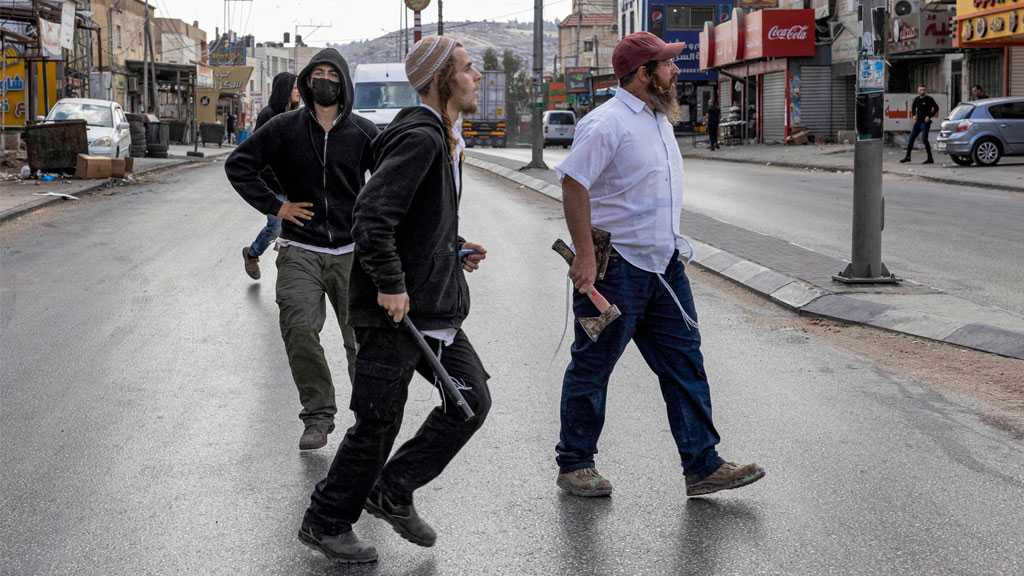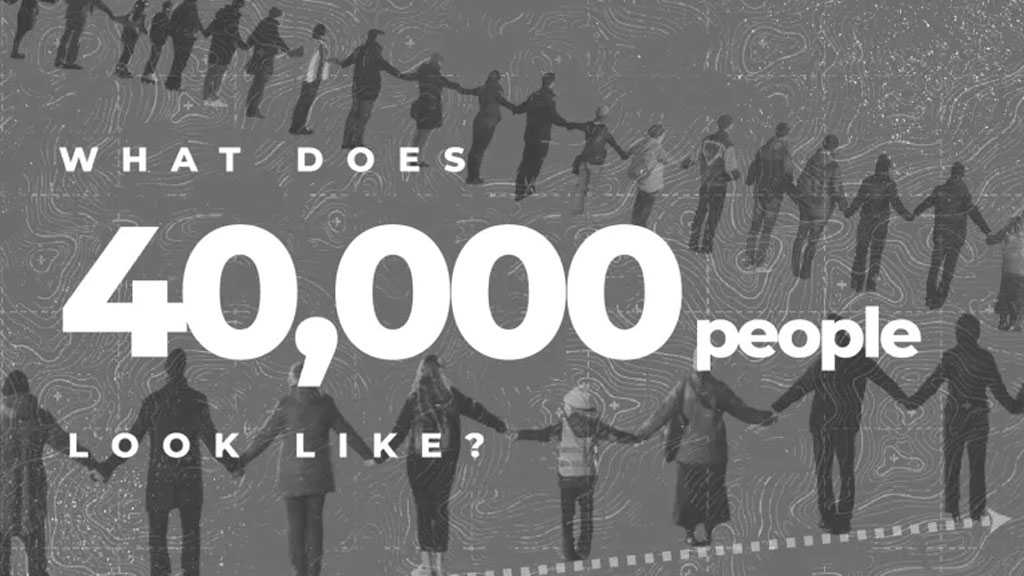Why the Bailout Scam Is More Likely to Fail than to Succeed

Source: Global Research/Information Clearinghouse, 14-10-2008
By Ismael Hossein-zadeh
Leaving the issue of fraud aside, the bail out scam is also doomed to fail because it avoids diagnosis and dodges the heart of the problem: the inability of more than five million homeowners to pay their fraudulently ballooned mortgage obligations.
Instead of trying to salvage the threatened real assets or homes and save their owners from becoming homeless, the bailout scheme is trying to salvage the phony or fictitious assets of the Wall Street gambler and reward their sins by sending taxpayers' good money after gamblers bad money. It focuses on the wrong end of the problem.
The apparent rationale for the bailout plan is that while the injection of tax payers' money into the Wall Street casino may not be fair, it is a necessary evil that will free the "troubled assets" and create liquidity in the financial markets, thereby triggering a much-needed wave of lending, borrowing and expansion.
There are at least five major problems with this argument.
The first major problem is that the current financial disaster is not really a liquidity problem as it is repeatedly portrayed to be. It is a problem of faith and trust, or lack thereof, which in turn stems from the disproportionately large amount of junk assets or mortgages relative to real assets. It is true that lending and credit expansion has almost come to a halt and, in this sense, there is a serious liquidity crisis. But this illiquidity is not really due to a lack of good money or real assets in the system. It is rather because owners of such valuable assets are unwilling to lend their precious possessions to owners of troubled assets, or worthless papers.
As Herman E. Daly, University of Maryland economist, puts it, "The value of present real wealth is no longer sufficient to serve as a lien to guarantee the exploding debt. Consequently the debt is being devalued in terms of existing wealth. No one any longer is eager to trade real present wealth for debt even at high interest rates. This is because the debt is worth much less, not because there is not enough money or credit."
The second major problem with the bailout scheme is that it is simply unfeasible and ineffectual because there is just not enough good money to redeem all the bad money that has ballooned or bubbled to a multiple of the good money and/or real assets.
The initial $700 billion bailout money falls way short of what is needed to rescue the Wall Street gamblers, as it is only a fraction of their accumulated bad debt. According to a September 29 Washington Post report:
"Twenty of the nation's largest financial institutions owned a combined total of $2.3 trillion in mortgages as of June 30. They owned another $1.2 trillion of mortgage-backed securities. And they reported selling another $1.2 trillion in mortgage-related investments on which they retained hundreds of billions of dollars in potential liability, according to filings the firms made with regulatory agencies. The numbers do not include investments derived from mortgages in more complicated ways, such as collateralized debt obligations."
These three categories of mortgage-related financial instruments add up to a $4.7 trillion obligation for the twenty largest financial institutions. This is nearly seven times as large as the initial Paulson/Bernanke bailout plan of $700 billion, which means the plan is destined to be ineffectual.
Nationwide, the ratio of bad to good money is much higher. According to Herman E. Daly, "Financial assets have grown by a large multiple of the real economy-paper exchanging for paper is now 20 times greater than exchanges of paper for real commodities." This means that the initial $700 billion bailout fund is simply a drop in the sea of bad debt, and that, therefore, there is not enough good money to pay for the mountain of junk assets accumulated by the gambling financial institutions.
The third major flaw of the bailout plan is that, as mentioned earlier, it does not address the real problem: the problem of rescuing the financially-distressed homeowners. As Dr. Paul Craig Roberts points out, "the Paulson bailout does not address the core problem. It only addresses the problem for the financial institutions that hold the troubled assets. Under the bailout plan, the troubled assets move from the banks' books to the Treasury's. But the underlying problem--the continuing diminishment of mortgage and home values--remains and continues to worsen."
Simply moving soured assets from fraudulent lenders to the Treasury, that is, buying junk mortgages at face value, will neither help the millions of homeowners facing homelessness, nor help mitigate the raging financial crisis. The bailout should, instead, focus on defrauded homeowners and real assets, not fictitious capital and its unscrupulous owners.
Instead of trying to salvage a mountain of soured assets and prop up bankrupt institutions, the government should allow for a market cleansing, or destruction, of such worthless assets by purchasing the threatened mortgages not at their inflated face value but at the current, depreciated, or market value-as the FDR government did in response the Great Depression of the 1930s.
This alternative, homeowner-based solution would have a number of advantages. First, and foremost, it would help citizens facing the specter of homelessness stay in their homes by allowing them to pay affordable mortgage installments based on reduced or realistic home prices.
By the same token, this solution would also allow the government to gradually recover the market-based home prices it would be paying the troubled commercial mortgage holders.
Obviously, this means that, instead of the predatory banks and similar financial institutions, the government would now be the title holder of the rescued homes; of course, until such homes are paid for, upon which time the homeowners would take the possession of their home titles.
By cleansing the market of the dead-weight of tons of junk assets, and allowing threatened homeowners to pay affordable mortgage installments, this bottom-up solution would also help restore faith and trust in the financial system, and in the lending and borrowing mechanism-thereby also mitigating the liquidity crisis.
Furthermore, by bailing out homeowners (and real assets) instead of Wall Street gambler, the government would need only a fraction of the money needed to pay for the huge bubble of the junk assets that have ballooned on top of a much narrower base of real assets. Compared with the scandalous Paulson/Bernanke bailout scheme, this means that the government would end up with enough excess money to invest on a long-term, robust stimulus plan a la the New Deal of the 1930s.
And this brings us to the discussion of the fourth major problem of the Paulson/Bernanke bailout scam: lack of any economic stimulus plan, which is badly needed for economic revival.
While government substitution for predatory lenders and the resulting institution of realistic or devalued mortgage installments will certainly lighten the financial burdens of the economically-pressed, it will not relieve them from the need to earn an income and make a decent living. Nor would it (by itself) provide the badly needed purchasing power or necessary demand to stimulate the economy.
To achieve such broader socio-economic objectives requires no less than duplicating (and perhaps even going beyond) FDR's New Deal reform package that proved critical in ending the Great Depression of the 1930s. A comprehensive long-term public investment in both social and physical infrastructure (health, education, roads, bridges, levees, schools, green energy, etc.) is bound to create jobs, inject purchasing power and liquidity into the economy, and revive production and expansion.
Of course, such an urgently needed comprehensive investment in the future of our society requires extensive public financing, which, in turn, requires a careful and socially-responsible fiscal policy. And this brings us to the fifth major problem of the Paulson/Bernanke bail out scheme: absence of any mention, let alone change, of our warped or lop-sided fiscal policies and priorities.
The sad and sick status of our public finance (the rising budget deficits, the soaring national debt, the curtailment of crucially important social spending, and the resulting neglect of both social and physical infrastructure) is a direct consequence of our warped fiscal policies that give priority to the interests of the super rich at the expense of everybody else. It is a direct result of the looting of our public money through a combination of (a) huge "supply-side" tax cuts for the wealthy, and (b) drastic increases in the share of military spending at the expense of non-military public spending.
In a real sense, even the current financial meltdown is a logical outcome of an economic philosophy that promotes extreme social inequality. Contrary to "expert" punditry and popular perceptions, it is not simply due to personal greed; more importantly, it is the result of a systemic failure, or the outcome of the diverging and conflicting class interests.
Progressive taxation, social spending, New Deal reforms, and the War on Poverty were designed not only to protect the poor and working people against the woes and vagaries of market mechanism, but also to save capitalism from itself. Instead of viewing public spending on social safety net programs as long-term investment in the future of the nation, trickle-down economic philosophy views such expenditures as overheads that need to be cut as much as possible.
To this effect, proponents of this philosophy have since the early 1980s been working very hard to cut taxes for the wealthy, to cut non-military public spending, and to reverse most of the social safety net programs that were put in place by FDR's New Deal and LBJ's War on Poverty.
Not surprisingly, the result has been an extreme concentration of national riches and resources in fewer and fewer hands, side-by-side with a steady deterioration of the living conditions of the overwhelming majority of our citizens. Unable to make ends meet, most of our citizens exceedingly resorted to borrowing.
Predatory lenders proved to be both creative and merciless in taking advantage of the economically vulnerable, or the legitimate aspirations and dreams of homeownership. Unfettered by the irresponsible government deregulation policies, these rapacious lenders pushed loans, engaged in deceitful or fraudulent lending practices, and unscrupulously invented many shady financial instruments that resulted in the accumulation of massive amounts of fictitious assets that proved unviable, and eventually collapsed under their own dead weight.
Unless the lopsided national priorities and perverse fiscal policies, known as trickle down or neoliberal economics, which began under Ronald Reagan, are somewhat rectified or mitigated, and the resulting financial resources are invested through a broad and carefully-crafted plan of social and economic recovery, no bailout plan of the plutocrats, by the plutocrats, for the plutocrats can succeed in reversing the current cycle of economic decline.
By Ismael Hossein-zadeh
Leaving the issue of fraud aside, the bail out scam is also doomed to fail because it avoids diagnosis and dodges the heart of the problem: the inability of more than five million homeowners to pay their fraudulently ballooned mortgage obligations.
Instead of trying to salvage the threatened real assets or homes and save their owners from becoming homeless, the bailout scheme is trying to salvage the phony or fictitious assets of the Wall Street gambler and reward their sins by sending taxpayers' good money after gamblers bad money. It focuses on the wrong end of the problem.
The apparent rationale for the bailout plan is that while the injection of tax payers' money into the Wall Street casino may not be fair, it is a necessary evil that will free the "troubled assets" and create liquidity in the financial markets, thereby triggering a much-needed wave of lending, borrowing and expansion.
There are at least five major problems with this argument.
The first major problem is that the current financial disaster is not really a liquidity problem as it is repeatedly portrayed to be. It is a problem of faith and trust, or lack thereof, which in turn stems from the disproportionately large amount of junk assets or mortgages relative to real assets. It is true that lending and credit expansion has almost come to a halt and, in this sense, there is a serious liquidity crisis. But this illiquidity is not really due to a lack of good money or real assets in the system. It is rather because owners of such valuable assets are unwilling to lend their precious possessions to owners of troubled assets, or worthless papers.
As Herman E. Daly, University of Maryland economist, puts it, "The value of present real wealth is no longer sufficient to serve as a lien to guarantee the exploding debt. Consequently the debt is being devalued in terms of existing wealth. No one any longer is eager to trade real present wealth for debt even at high interest rates. This is because the debt is worth much less, not because there is not enough money or credit."
The second major problem with the bailout scheme is that it is simply unfeasible and ineffectual because there is just not enough good money to redeem all the bad money that has ballooned or bubbled to a multiple of the good money and/or real assets.
The initial $700 billion bailout money falls way short of what is needed to rescue the Wall Street gamblers, as it is only a fraction of their accumulated bad debt. According to a September 29 Washington Post report:
"Twenty of the nation's largest financial institutions owned a combined total of $2.3 trillion in mortgages as of June 30. They owned another $1.2 trillion of mortgage-backed securities. And they reported selling another $1.2 trillion in mortgage-related investments on which they retained hundreds of billions of dollars in potential liability, according to filings the firms made with regulatory agencies. The numbers do not include investments derived from mortgages in more complicated ways, such as collateralized debt obligations."
These three categories of mortgage-related financial instruments add up to a $4.7 trillion obligation for the twenty largest financial institutions. This is nearly seven times as large as the initial Paulson/Bernanke bailout plan of $700 billion, which means the plan is destined to be ineffectual.
Nationwide, the ratio of bad to good money is much higher. According to Herman E. Daly, "Financial assets have grown by a large multiple of the real economy-paper exchanging for paper is now 20 times greater than exchanges of paper for real commodities." This means that the initial $700 billion bailout fund is simply a drop in the sea of bad debt, and that, therefore, there is not enough good money to pay for the mountain of junk assets accumulated by the gambling financial institutions.
The third major flaw of the bailout plan is that, as mentioned earlier, it does not address the real problem: the problem of rescuing the financially-distressed homeowners. As Dr. Paul Craig Roberts points out, "the Paulson bailout does not address the core problem. It only addresses the problem for the financial institutions that hold the troubled assets. Under the bailout plan, the troubled assets move from the banks' books to the Treasury's. But the underlying problem--the continuing diminishment of mortgage and home values--remains and continues to worsen."
Simply moving soured assets from fraudulent lenders to the Treasury, that is, buying junk mortgages at face value, will neither help the millions of homeowners facing homelessness, nor help mitigate the raging financial crisis. The bailout should, instead, focus on defrauded homeowners and real assets, not fictitious capital and its unscrupulous owners.
Instead of trying to salvage a mountain of soured assets and prop up bankrupt institutions, the government should allow for a market cleansing, or destruction, of such worthless assets by purchasing the threatened mortgages not at their inflated face value but at the current, depreciated, or market value-as the FDR government did in response the Great Depression of the 1930s.
This alternative, homeowner-based solution would have a number of advantages. First, and foremost, it would help citizens facing the specter of homelessness stay in their homes by allowing them to pay affordable mortgage installments based on reduced or realistic home prices.
By the same token, this solution would also allow the government to gradually recover the market-based home prices it would be paying the troubled commercial mortgage holders.
Obviously, this means that, instead of the predatory banks and similar financial institutions, the government would now be the title holder of the rescued homes; of course, until such homes are paid for, upon which time the homeowners would take the possession of their home titles.
By cleansing the market of the dead-weight of tons of junk assets, and allowing threatened homeowners to pay affordable mortgage installments, this bottom-up solution would also help restore faith and trust in the financial system, and in the lending and borrowing mechanism-thereby also mitigating the liquidity crisis.
Furthermore, by bailing out homeowners (and real assets) instead of Wall Street gambler, the government would need only a fraction of the money needed to pay for the huge bubble of the junk assets that have ballooned on top of a much narrower base of real assets. Compared with the scandalous Paulson/Bernanke bailout scheme, this means that the government would end up with enough excess money to invest on a long-term, robust stimulus plan a la the New Deal of the 1930s.
And this brings us to the discussion of the fourth major problem of the Paulson/Bernanke bailout scam: lack of any economic stimulus plan, which is badly needed for economic revival.
While government substitution for predatory lenders and the resulting institution of realistic or devalued mortgage installments will certainly lighten the financial burdens of the economically-pressed, it will not relieve them from the need to earn an income and make a decent living. Nor would it (by itself) provide the badly needed purchasing power or necessary demand to stimulate the economy.
To achieve such broader socio-economic objectives requires no less than duplicating (and perhaps even going beyond) FDR's New Deal reform package that proved critical in ending the Great Depression of the 1930s. A comprehensive long-term public investment in both social and physical infrastructure (health, education, roads, bridges, levees, schools, green energy, etc.) is bound to create jobs, inject purchasing power and liquidity into the economy, and revive production and expansion.
Of course, such an urgently needed comprehensive investment in the future of our society requires extensive public financing, which, in turn, requires a careful and socially-responsible fiscal policy. And this brings us to the fifth major problem of the Paulson/Bernanke bail out scheme: absence of any mention, let alone change, of our warped or lop-sided fiscal policies and priorities.
The sad and sick status of our public finance (the rising budget deficits, the soaring national debt, the curtailment of crucially important social spending, and the resulting neglect of both social and physical infrastructure) is a direct consequence of our warped fiscal policies that give priority to the interests of the super rich at the expense of everybody else. It is a direct result of the looting of our public money through a combination of (a) huge "supply-side" tax cuts for the wealthy, and (b) drastic increases in the share of military spending at the expense of non-military public spending.
In a real sense, even the current financial meltdown is a logical outcome of an economic philosophy that promotes extreme social inequality. Contrary to "expert" punditry and popular perceptions, it is not simply due to personal greed; more importantly, it is the result of a systemic failure, or the outcome of the diverging and conflicting class interests.
Progressive taxation, social spending, New Deal reforms, and the War on Poverty were designed not only to protect the poor and working people against the woes and vagaries of market mechanism, but also to save capitalism from itself. Instead of viewing public spending on social safety net programs as long-term investment in the future of the nation, trickle-down economic philosophy views such expenditures as overheads that need to be cut as much as possible.
To this effect, proponents of this philosophy have since the early 1980s been working very hard to cut taxes for the wealthy, to cut non-military public spending, and to reverse most of the social safety net programs that were put in place by FDR's New Deal and LBJ's War on Poverty.
Not surprisingly, the result has been an extreme concentration of national riches and resources in fewer and fewer hands, side-by-side with a steady deterioration of the living conditions of the overwhelming majority of our citizens. Unable to make ends meet, most of our citizens exceedingly resorted to borrowing.
Predatory lenders proved to be both creative and merciless in taking advantage of the economically vulnerable, or the legitimate aspirations and dreams of homeownership. Unfettered by the irresponsible government deregulation policies, these rapacious lenders pushed loans, engaged in deceitful or fraudulent lending practices, and unscrupulously invented many shady financial instruments that resulted in the accumulation of massive amounts of fictitious assets that proved unviable, and eventually collapsed under their own dead weight.
Unless the lopsided national priorities and perverse fiscal policies, known as trickle down or neoliberal economics, which began under Ronald Reagan, are somewhat rectified or mitigated, and the resulting financial resources are invested through a broad and carefully-crafted plan of social and economic recovery, no bailout plan of the plutocrats, by the plutocrats, for the plutocrats can succeed in reversing the current cycle of economic decline.




